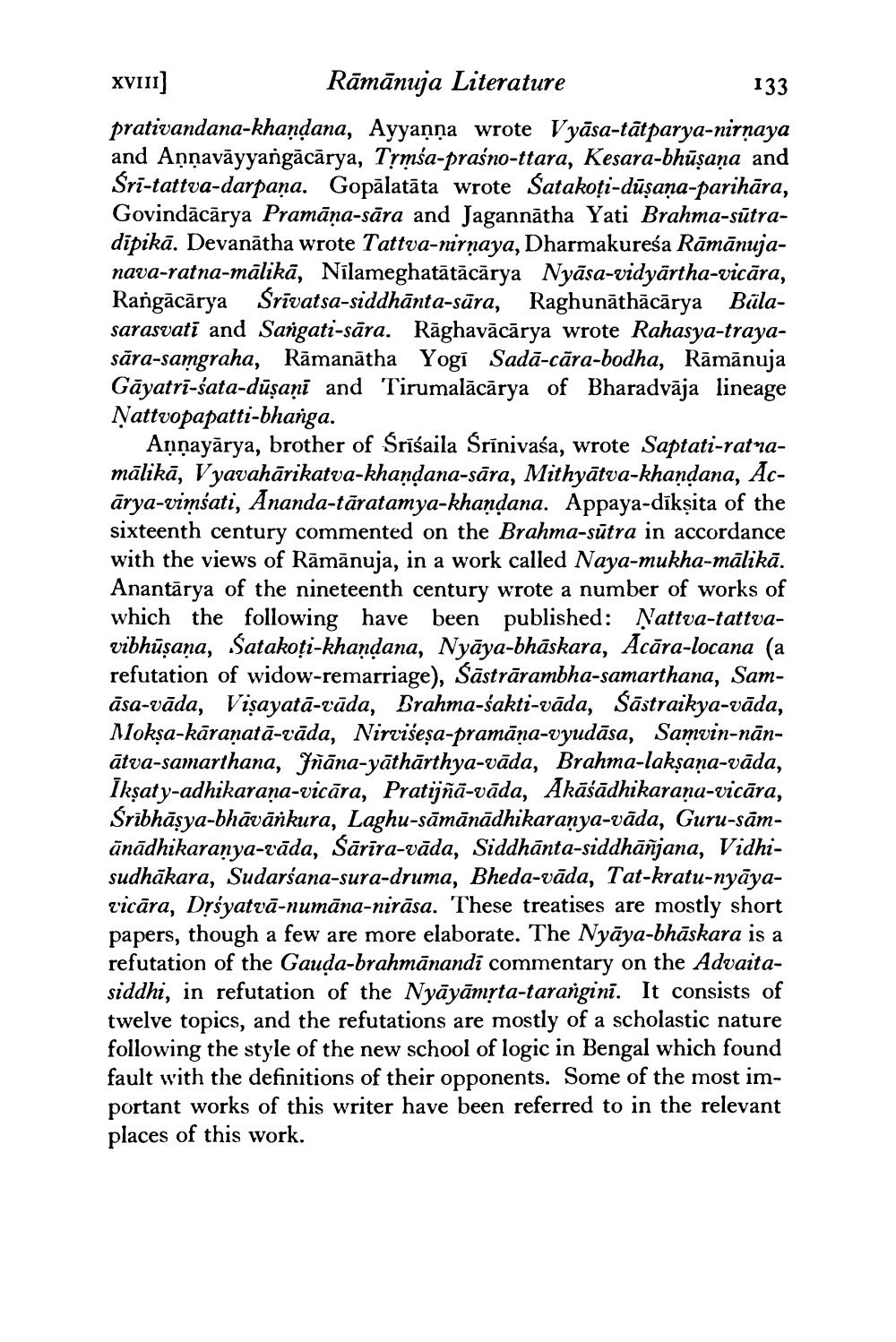________________
XVIII] Rāmānuja Literature
133 prativandana-khandana, Ayyanna wrote Vyāsa-tātparya-nirņaya and Annavāyyangācārya, Trmśa-prašno-ttara, Kesara-bhūşaņa and Sri-tattva-darpaņa. Gopālatāta wrote Satakoți-dūşana-parihāra, Govindācārya Pramāņa-sāra and Jagannātha Yati Brahma-sūtradipikā. Devanātha wrote Tattva-nirnaya, Dharmakureśa Rāmānujanava-ratna-mālikā, Nīlameghatātācārya Nyāsa-vidyārtha-vicāra, Rangācārya Śrīvatsa-siddhānta-sūra, Raghunāthācārya Bülasarasvati and Sangati-sāra. Rāghavācārya wrote Rahasya-trayasāra-samgraha, Rāmanātha Yogi Sadā-cāra-bodha, Rāmānuja Gāyatri-sata-dūṣaṇi and Tirumalācārya of Bharadvāja lineage Nattvopapatti-bhanga.
Annayārya, brother of Srīśaila Srinivasa, wrote Saptati-ratnamālikā, V yavahārikatva-khandana-sāra, Mithyātva-khandana, Acārya-vimšati, Ananda-tāratamya-khandana. Appaya-dikșita of the sixteenth century commented on the Brahma-sūtra in accordance with the views of Rāmānuja, in a work called Naya-mukha-mālikā. Anantārya of the nineteenth century wrote a number of works of which the following have been published: Ņattva-tattvavibhūsaņa, Satakoți-khandana, Nyāya-bhāskara, Acāra-locana (a refutation of widow-remarriage), Šāstrārambha-samarthana, Samāsa-vāda, Visayatā-vāda, Brahma-sakti-vāda, Šāstraikya-vāda, Nlokşa-kāramatā-vāda, Nirviseșa-pramāna-vyudāsa, Samvin-nanātva-samarthana, jñāna-yāthārthya-vāda, Brahma-lakṣaṇa-vāda, Ikșaty-adhikarana-vicāra, Pratijñā-vāda, Akāśādhikarana-vicāra, Śrībhāsya-bhāvānkura, Laghu-sāmānādhikaranya-vāda, Guru-sāmānādhikaranya-tāda, Sārīra-vāda, Siddhānta-siddhāñjana, Vidhisudhākara, Sudarśana-sura-druma, Bheda-vāda, Tat-kratu-nyāyaricāra, Drśyatvā-numāna-nirāsa. These treatises are mostly short papers, though a few are more elaborate. The Nyāya-bhāskara is a refutation of the Gauda-brahmānandi commentary on the Advaitasiddhi, in refutation of the Nyāyāmrta-tarangini. It consists of twelve topics, and the refutations are mostly of a scholastic nature following the style of the new school of logic in Bengal which found fault with the definitions of their opponents. Some of the most important works of this writer have been referred to in the relevant places of this work.




